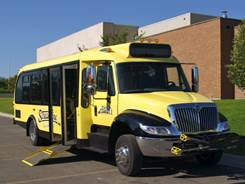MSU News features WTI’s Proposal that brings $10.3 million for road and public transit improvements.
From MSU News– BOZEMAN – A proposal written by researchers at Montana State University’s Western Transportation Institute has resulted in a $10.3 million federal grant for improving safety and traffic flow on the road leading to the Big Sky community. The funding comes from one of the most highly coveted and competitive sources of federal transportation […]
Rob Ament to lead webinar on woolen erosion control products (March 29)
On Thursday, March 29, Road Ecology Program Manager Rob Ament will lead a webinar entitled “Evaluation of Effectiveness and Cost-Benefits of Woolen Roadside Reclamation Products” for the Center for Environmentally Sustainable Transportation in Cold Climates (CESTiCC) at the University of Alaska, Fairbanks. The presentation will focus on Rob’s research, which took a fresh look at […]
WTI’s Dani Hess is making the news with Bozeman Commute-A-Thon
The Spring Commute-A-Thon kicked off on Monday March 26, and will continue through Friday, April 6. Coordinator Dani Hess was interviewed by KBZK-TV while promoting the event on the MSU campus on Monday. Watch her interview and the full new story on the KBZK website. http://www.kbzk.com/story/37813013/commute-a-thon-competition-kicks-off-in-bozeman Have you joined the challenge? go to https://bozemancommute.org/#/challenges/5a872dd59584fe20ee7dfe16 to register on the […]
National Center for Rural Road Safety announces Rural Intelligent Transportation Systems Toolkit
Is your agency looking for innovative solutions to your most common transportation safety challenges? Are you interested in using technology, but not sure which one best fits the needs of your rural area? Or maybe you’ve considered Intelligent Transportation Systems (ITS) before, but are afraid they are too expensive or only applicable in an […]
MSU is on board for the Spring Commute-A-Thon!

Thank you to MSU News Service, which is helping to publicize and promote the upcoming Spring Commute-A-Thon March 26th-April 6th. Last week, MSU News published a feature story about the event that has been highlighted on the MSU website. Planning to participate? Register here on the Bozeman Commuter Project website and join the challenge!
New Project: Evaluating the Performance of Geosynthetic Materials for Montana DOT
Geosynthetic materials are routinely used in transportation applications to facilitate construction, improve stability, and enhance longevity. Departments of transportation have generally had good experience with these products, although a robust and non-proprietary design process for geosynthetic reinforced paved roads is still lacking. The Montana Department of Transportation (MDT) believes that geosynthetics can be used responsibly […]
New Project: Developing a Severe Weather Index for Maryland DOT
A challenge that many state DOTs face is the accurate assessment of winter maintenance operations. One tool that has been successfully used by DOTs is the severe weather index (SWI), which can assess the performance and related costs associated with winter maintenance operations. It considers the relative severity of each weather event, and relative severity […]
Marcel Huijser Presents at Two Western Wildlife Forums
WTI Research Scientist Marcel Huijser was on the road in February, speaking at two major regional wildlife events in Colorado and California. On February 8, he was invited to give the keynote address (“Road Ecology, are we taking the right turns?”) at the 2018 Annual Meeting of the Colorado Chapter of the Wildlife Society. On […]
Get on board for the Spring Commute-A-Thon!
Log your sustainable commutes to win prizes, save money, and find carpool buddies during the two-week Spring Commute-A-Thon March 26th-April 6th. With the MSU semester still underway, and snow still on the ground, there’s no better time to give carpooling, or the Streamline bus a try! Log your bike, walk, carpool and bus trips on […]
Global Tiger Forum Invites Rob Ament to India
In February, Road Ecology Program Manager Rob Ament participated in a five day Road Ecology workshop in Nagpur, Maharashtra, India, entitled “Capacity Building in Designing Mitigation Measures along Linear Infrastructure in Tiger Landscapes.” Rob gave seven presentations at the event, where attendees from India, Nepal, and the U.S. gathered for three days of talks and […]
